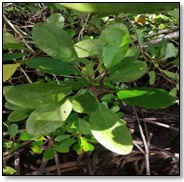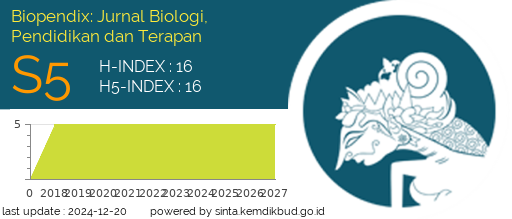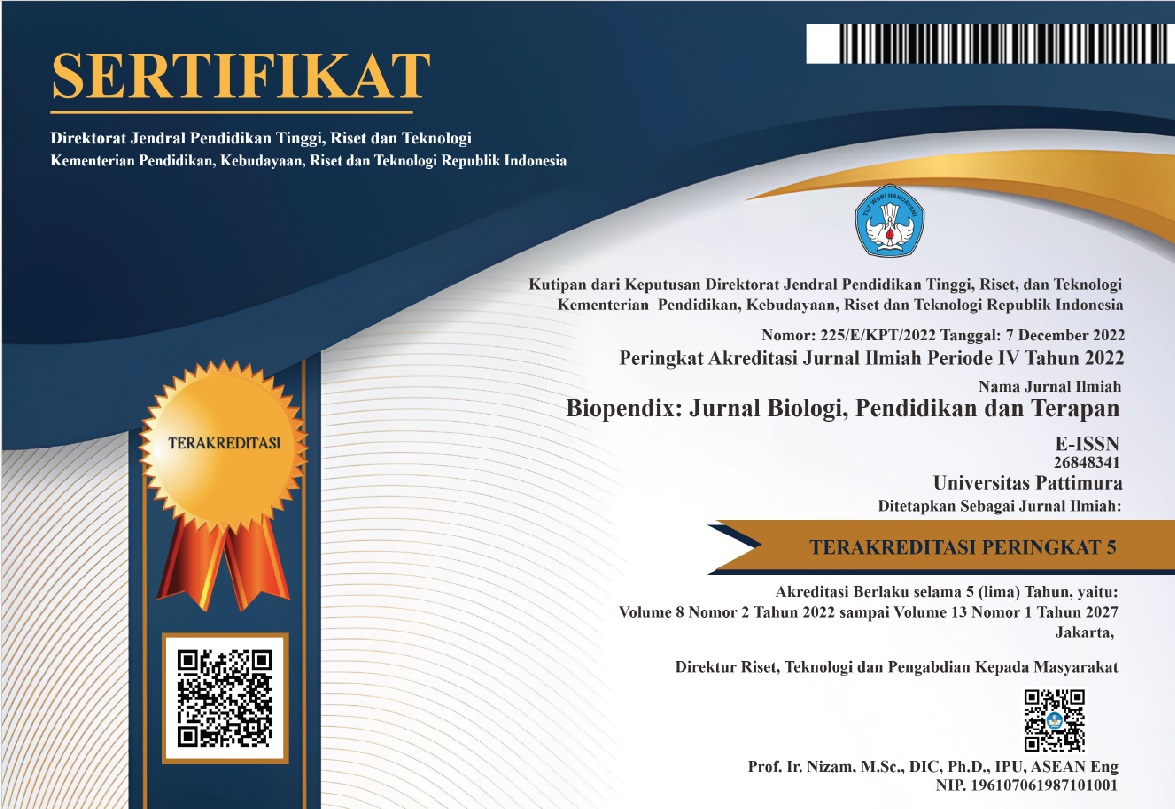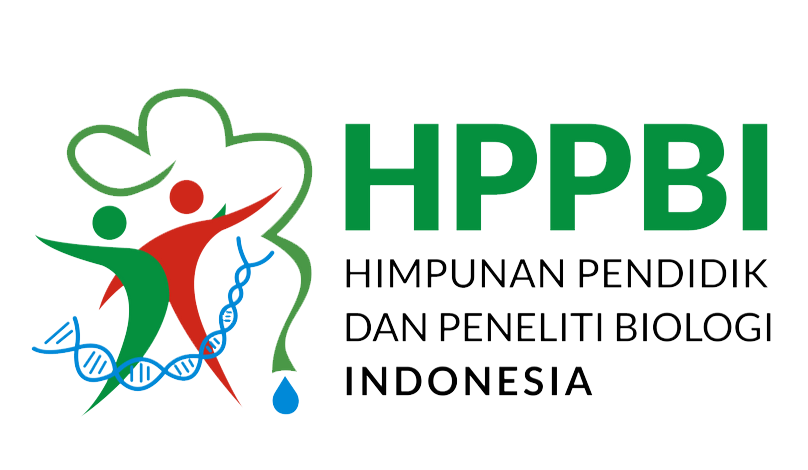KOMPOSISI JENIS MANGROVE DI DUSUN DOKYAR, DESA KAIBOBU KABUPATEN SERAM BAGIAN BARAT
Abstract
Abstract
Background : Mangrove is a complex ecosystem that is unique and has a large enough carrying capacity for the surrounding environment. Mangrove ecosystems have ecological and economic functions. The ecological function is to protect the coastline, habitat, feeding ground, spawning ground and nursery ground for aquatic biota as well as controlling the microclimate. Meanwhile, its economic function is to produce raw materials for charcoal and medicines. Mangrove ecosystems have high biological productivity, but about 5% are consumed directly by terrestrial animals, and as much as 95% as debris from litter or leaf fall. In the Dokyar Hamlet area of Kaibobu Village, the mangrove forest ecosystem plays a very important role in maintaining the environmental balance in the area, because it is close to the villages. This area has unspoiled mangrove forests. However, there is no information regarding the types of mangroves in Dokyar Hamlet, Kaibobu Village, so it is necessary to conduct research on an identification of mangrove species found in the waters of Dokyar Hamlet, Kaibobu Village.
Methods: This research was conducted in October 2020 with a sampling location taking place in Dokyar Hamlet, Kaibobu Village, Kairatu District, West Seram Regency, Maluku. The observation method used in the research and the sampling of mangroves used the line transect method, while the identification of mangroves was by observing the roots, stems, leaves, flowers and fruits.
Results: Mangrove found 7 species from 6 genera: Bruguiera gimnorrhiza, Ceriops tagal, Nypa fruticans, Rhizophora apiculata, Rhizhopora mucronata, Sonneratia alba and Xylocarpus granatum
Conclusion: The results of research in the mangrove ecosystem area of Dokyar Hamlet, Kaibobu Village, found 7 mangrove species belonging to 6 genera.
Keywords: ecosystem, identification, mangroves
Downloads

Authors who publish with this Journal agree to the following terms:
- Author retain copyright and grant the journal right of first publication with the work simultaneously licensed under a creative commons attribution license that allow others to share the work within an acknowledgement of the work’s authorship and initial publication of this journal.
- Authors are able to enter into separate, additional contractual arrangement for the non-exclusive distribution of the journal’s published version of the work (e.g. acknowledgement of its initial publication in this journal).
- Authors are permitted and encouraged to post their work online (e.g. in institutional repositories or on their websites) prior to and during the submission process, as it can lead to productive exchanges, as well as earlier and greater citation of published works




 2
2






